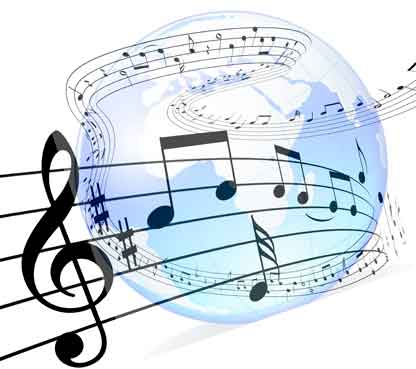There are 1,000,000 and one suggestions for music production; some are sound, some are for a certain genre, some are nugatory, some are abstract and a few will simply work specifically for you. A second type of behavior in this context is the social conduct that accompanies music. The PhD, which is required for students who need to work as university professors in musicology, music historical past, or music concept, takes three to 5 years of study after the grasp’s degree, throughout which period the student will full superior programs and undertake analysis for a dissertation.
It’s well known that songs can serve functions of social management, in addition to instructional and historiographical features. In industrialized nations, listening to music by way of a recorded kind, reminiscent of sound recording or watching a music video, became more widespread than experiencing live performance, roughly in the midst of the twentieth century.
In group settings, superior newbie musicians perform with professional musicians in a wide range of ensembles equivalent to group concert bands and community orchestras. The popularity and success of the Baroque style was encouraged by the Roman Catholic Church which had decided at the time of the Council of Trent that the arts should talk religious themes in direct and emotional involvement.
Musical sound does not and can’t represent a system that operates outside the management of human beings. In some college systems, music lessons on how you can play devices could also be provided. In Western artwork music, the commonest types of written notation are scores, which include all the music parts of an ensemble piece, and parts, that are the music notation for the individual performers or singers.
Jazz is a type of music that was invented around 1900 in New Orleans in the south of the USA There have been many black musicians residing there who performed a style of music referred to as blues music. Since the emergence of the study of psychoacoustics in the Nineteen Thirties, most lists of components of music have related more to how we hear music than how we study to play it or examine it. C.E. Seashore, in his e book Psychology of Music, 17 identified four “psychological attributes of sound”.
